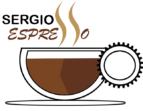How to Design and Monetize a Free Product: A Guide for PM Interviews
## Introduction
In the competitive world of product management, a common dilemma faced by product managers is how to design a free product while also finding a viable path to monetization. This section will explore the typical questions candidates might encounter in PM interviews at top tech firms like FAANG and the importance of using structured frameworks for answering them. We’ll give you an in-depth look at how to approach the question: how can you design a free product and effectively monetize it?
## Detailed Guide on Framework Application
### Selecting a Framework
For this question, we’ll use the Business Model Canvas (BMC) framework. It allows us to systematically analyze the possibilities of revenue generation by defining value propositions, customer segments, channels, customer relationships, revenue streams, and more.
### Step-by-Step Guide on Applying the BMC Framework
- **Value Proposition:** Identify what unique value the free product can offer to its users. For example, if the product is a mobile application that helps users track their water intake, the value could be promoting a healthier lifestyle through hydration monitoring.
- **Customer Segments:** Determine who will benefit most from this product. Continued with the above example, our segments are health-conscious individuals, athletes, and possibly people with certain medical conditions.
- **Channels:** Decide how the product will reach its customers. For a mobile application, the channels could include app stores, social media, and online advertising.
- **Customer Relationships:** Establish how the business will interact with its customers to create and maintain relations. This might involve push notifications, email marketing, or in-app communities and support.
- **Revenue Streams:** Here’s where we decide on how to monetize the product. Options include advertising, in-app purchases, premium subscriptions, affiliate marketing, selling aggregated data (with user consent), or partnering with relevant businesses.
- **Key Resources, Activities, and Partnerships:** Outline what you need to develop and maintain the product, such as developers, a marketing team, and partnerships with health brands or influencers.
- **Cost Structure:** Understand the costs involved in creating and scaling the product. This should include development, marketing, server costs, etc.
### Hypothetical Examples
Let’s say our water intake tracker app decides to monetize through premium subscriptions offering personalized hydration plans and in-app purchases such as virtual badges or health reports. We also decide to incorporate ads and affiliate links to water filter products.
### Facts Check
We should verify that the monetization strategies align with real-world data such as average app purchase rates, click-through rates for ads, and conversion rates for affiliate marketing.
### Communication Tips
Be clear and concise in explaining your thought process and how your strategies align with the customer’s needs and the company’s goals. Display confidence but also be open to feedback and further discussion.
## Conclusion
In conclusion, monetizing a free product requires a thoughtful approach that encapsulates understanding your audience, delivering value, and seamlessly integrating monetization methods that retain user experience at their core. The Business Model Canvas is a powerful tool that can structure thoughts and present a monetization strategy in a systematic way. Candidates are encouraged to practice with this framework to enhance their interview preparation.
